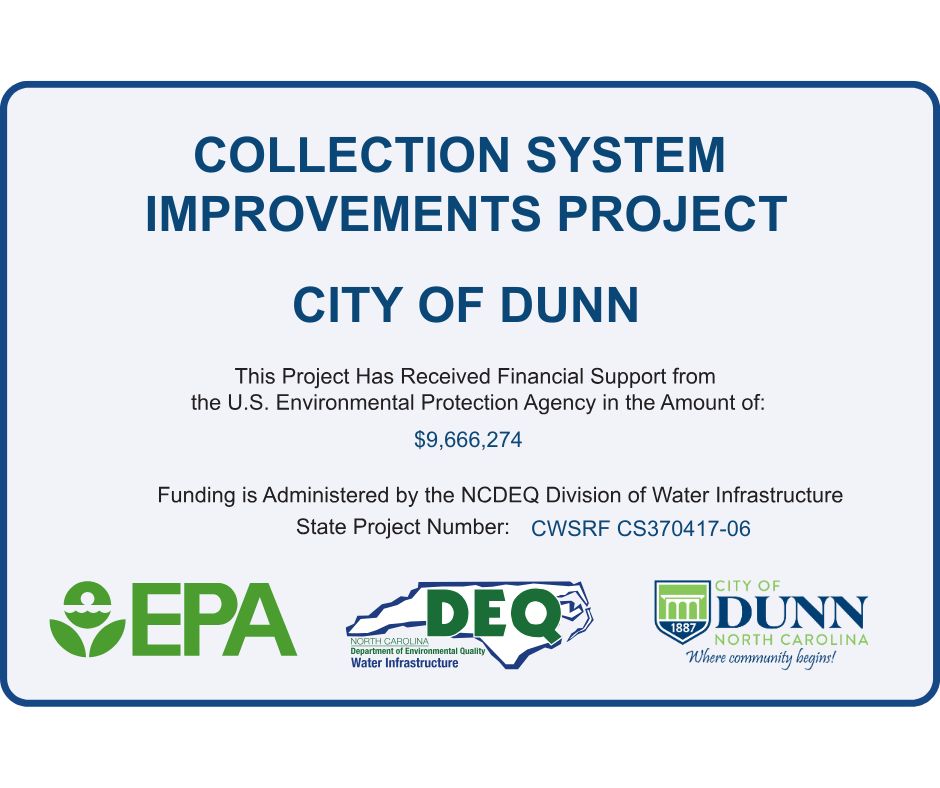Dunn East Side Pump Station Project:
Funding: USDA Loan
Entire Project Budget: $12,126,000.00
Estimated Completion Date: December 2026
Scope: Project consists of installation of a new 2.50-million-gallon pre-stressed concrete wet weather storage tank and suction lift wet weather pump station with enclosure at the City of Dunn's Eastside Pump Station. Work at the pump station also includes (1) replacing the existing power service, transformer, generator, and ATS; (2) providing new electrical gear and flow meter for pump station; (3) completing SCADA modifications; (4) completing site improvements/grading; and (5) installing new yard piping, manholes, and valves. The Project also includes rehabilitating approximately 1,705 linear feet of 21-inch gravity sewer and 910 linear feet of 24-inch gravity sewer using the Cured-In-Place-Pipe method and rehabilitating 12 existing manholes generally along Godwin Street in the City of Dunn.
Dunn SRF Sewer Collection System Improvements:
Funding: NC State Revolving Fund
Entire Project Budget: $9,859,599
Estimated
Completion Date: Spring 2026
Scope: This project consists of the rehabilitation of approximately 2,161 LF of 6‐inch existing gravity sewer line, 18,137 LF of 8‐inch existing gravity sewer line, 374 LF of 10‐inch gravity sewer line, 892 LF of 12‐inch gravity sewer line, 699 LF of 15‐inch gravity sewer line and rehabilitation/replacement of approximately 113 manholes. The rehabilitation will include the replacement and reconnection of approximately 422 sewer connections and 14,770 LF of 4‐inch sewer laterals.

Machine Welding Outfall Improvements:
Funding: DEQ (American Rescue Plan Funds)
Entire Project Budget: $8,591,002
Estimated Completion Date: Summer 2025
Scope: This project is to convert the Machine and Welding force main to a gravity sewer line. The new sewer line will be roughly 5,990 LF of 36” pipe, 280 LF of encasement pipe, 26 manholes, and two concrete structures.
Hwy 301 South Elevated Water Tank
Funding: State Funding
Entire Project Budget: $4,444,753.00
Estimated Completion Date: Spring 2026
Scope: Construction of a 500,000-gallon elevated steel storage tank on HWY 301.